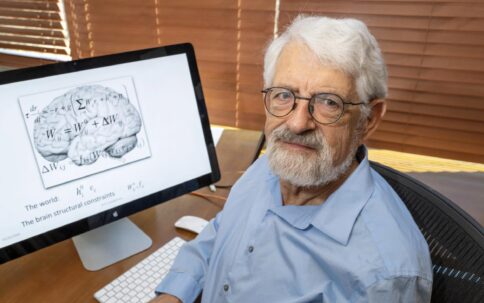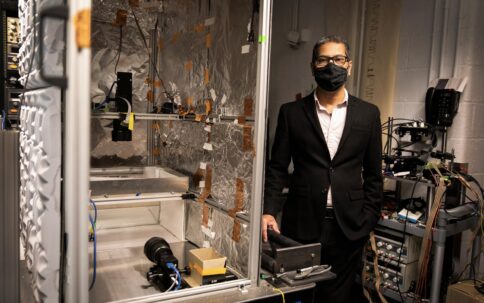Venkatesh Murthy
Kempner Faculty Steering Committee
Raymond Leo Erikson Life Sciences Professor
He/Him

Contact Information
Office Phone
617-496-4833Social Media
Office Address
16 Divinity Ave, Room BL4027Assistants
Subjects I Teach:
- Neuroscience and AI
Areas I Research:
About
Venkatesh Murthy was born in a small industrial town in south India called Neyveli. After getting his Bachelor of Technology degree in Mechanical Engineering from the Indian Institute of Technology, Madras, he came to the United States with a vague idea of combining engineering and biology. A degree (M.S.E.) in Bioengineering from the University of Washington, Seattle led to his interest in neuroscience. A PhD in Physiology & Biophysics at the University of Washington then followed, and postdoctoral work at the Salk Institute for Biological Studies, La Jolla, solidified his path in neuroscience research.
Murthy came to Harvard University as an Assistant Professor in 1999 and is now the Raymond Leo Erikson Life Sciences Professor of Molecular & Cellular Biology, as well as the Paul J. Finnegan Family Director of the Center for Brain Science. His research aims to shed light on how collections of neurons in the brain process information and give rise to behaviors, with a current emphasis on the sense of smell. He is keenly interested in the connections between artificial intelligence and brain science, and teaches an undergraduate course titled “Artificial and Natural Intelligence.” More about Venkatesh Murthy can be found in this piece from Current Biology Magazine.
Research Focus
Murthy’s current research focuses on neural circuits, algorithms, and learning. The Murthy Lab research group is interested in understanding the neural and algorithmic basis of complex sensory-guided behaviors in terrestrial animals. To this end, it has developed behavioral tasks in mice using stimuli and situations that approximate natural settings, while allowing electrophysiological recordings, high-resolution optical imaging and optogenetic manipulation. The Lab records neural activity in behaving mice using electro- or opto-physiological methods and relates them to behavioral features, attempting to discern the computational algorithms underlying these behaviors. Where possible, the Lab also examines the relevant neural circuits to understand how their architecture gives rise to the patterns of neural activity observed in behaving animals. Finally, the Lab is also interested in understanding how neural circuits and computation are modified by behavioral state and learning, collaborating closely with theorists to offer concise and mathematical explanations of neural and behavioral phenomena observed.





